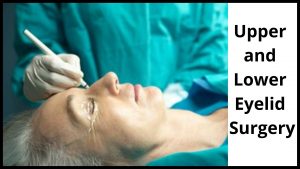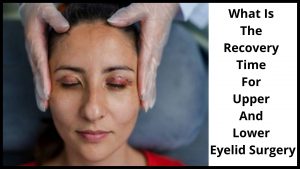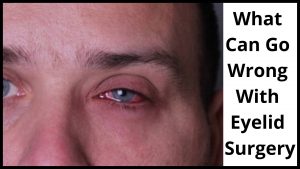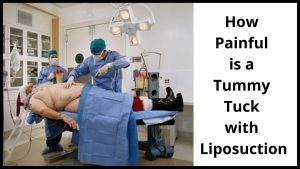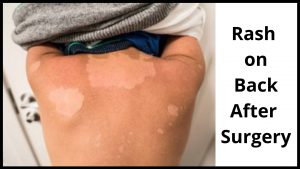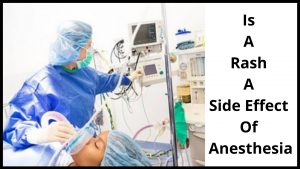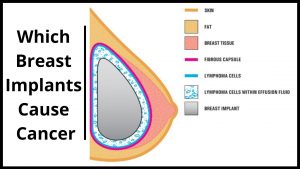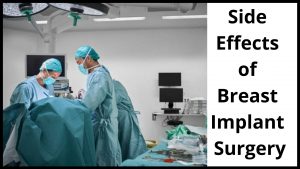
When you are considering how much is a mini facelift going to cost you, there are many factors to keep in mind.
In the United States, doctors typically charge around between $6,000 to $15,000 for a 2hrs procedure.
This sometimes includes an additional cost for your hospital stay and anesthesia that is been used.
The prices in other parts of the world may be much lower, but the quality of results will also be affected.
The mini facelift can be one way that you reduce the appearance of facial wrinkles, rebuild confidence, and improve your self-esteem.
How Much Is A Mini Face Lift – Cost and What is done.
There are several things to think about when it comes to the costs of a mini facelift.
You will likely find that different doctors will price their services differently.
The cost of a single procedure can range from a couple of hundred dollars all the way up to five thousand dollars or more.
Prices will also depend on the type of procedure that you choose and the doctor that you choose.
The mini facelift is best suited to people who need only minimal correction to their appearance.
You do not want to invest in the more expensive surgeries that take longer and will offer you fewer benefits.
These surgeries include the traditional rhinoplasty, including incisions, but they do not correct everything.
If you are not concerned about your nose being left unaltered, then this option may work for you.
And if you need your nose altered in order to narrow your nostrils or if you have lost volume after weight loss, then you may want to consider other options.
When you are considering how much is a mini facelift going to cost, consider the options that you have as well.
You can choose to have your nose reshaped, your lips tightened, or other areas of the face redesigned.
These procedures will all cost a little more than a mini-facelift, but many of them can be done at the same time.
This can save you time, which can be hard to come by when you are undergoing a procedure.
How much is a mini facelift is something that you should ask the surgeon that is doing your lift?
Some surgeons will give you an estimation, but many will quote you based on your history.
This means that how much a lift will cost you will be determined by the age and health of the person.
Even if you have a stable income, you may find that your insurance company will not pay for the procedure.
Other people may have to look into financing options to get the money they need for the procedure.
If you are looking for a mini-facelift, then you will need to start researching all of your options.
You may find that you can get the services of one surgeon and that the cost is divided between you and the surgeon that will be doing your procedure.
This is especially common if you have any health issues.
You can usually choose which surgeon you want to use.
They should schedule an appointment to get started with them.
Once you have scheduled the visit, you should find out how much the total cost is going to be.
This is something that you can learn from the doctor, but it is also something that you should know ahead of time.
You can usually ask the office staff for this information.
The amount of time that you spend in the chair will depend on how much is a mini-facelift that you want.
Some people only spend thirty minutes or so in the chair.
Others spend up to an hour or more.
Either way, the time that you spend will be very important.
Since you cannot go back later and change the decisions that you make, you should consider this before making your final decision.
You should take your time to look into this before making any final decisions.
What will happen during the mini facelift?
During this procedure, your surgeon will make small incisions in the top of your head so they can lift the skin and remove any excess fat.
They will then use a machine to compress the area and then they will use stitches to close up the incisions.
You can expect that you will be given pain medication and possibly some pain medications afterward.
It’s best to follow your doctor’s instructions for how much pain you can handle without hurting yourself.
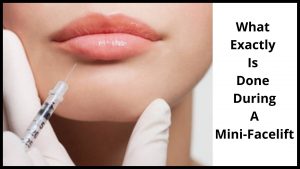
What Exactly Is Done During A Mini-Facelift?
During the mini-facelift, the surgical personnel will numb the area around the eyes and forehead so that you will not feel any pain or discomfort.
Your surgeon then uses tiny mechanical scissors to make one small incision inside your hairline, behind your eyebrows, and then another smaller one behind your temples.
Sutures are then placed on this hole and the tissue is pulled away from your skin.
Also, sutures and incisions are less invasive than traditional surgical facial procedures, and this means that patients heal at a faster rate.
The mini facelift is typically completed in about three to four hours.
A mini facelift procedure may also include the removal of excess fat and skin.
Your neck lift procedure may also include the removal of fat and skin from the neck region in order to achieve similar results.
This is because a neck lift procedure also requires an incision to take out excess tissue, which means there will be less scarring.
However, some neck lift procedures may also include the use of liposuction to achieve similar results.
As compared to a full facelift, a mini facelift leaves less noticeable scars.
The recovery time for a mini-facelift is significantly shorter than that for a full-face lift.
In addition, mini-facelifts are generally performed at a much slower pace, as well.
Before any facelift can be completed, you will need to visit your plastic surgeon and have him or her do a medical evaluation to determine whether or not you are a good candidate for this facelift.
In general, you can expect to see a more youthful appearance following a facelift procedure.
Some patients even report having a more youthful appearance after they undergo a neck lift procedure.
If you smoke cigarettes or have a family history of smoking, you may want to consider quitting if you want to retain a more youthful appearance.
Smoking will age you at twice the speed that your skin is aging, so it makes sense to do everything you can to protect your skin.
You can always use age-defying creams and moisturizers, and you can invest in a sun-blocking lotion that will help keep your skin looking younger for many years to come.
It is also important that you get plenty of sleep, exercise, and avoid harmful substances such as alcohol, caffeine, and tobacco.
Mini facelifts are safe and effective, but it is important to remember that each patient’s appearance will vary, depending on many factors.
Make sure you consult with a reputable surgeon who will be able to give you the most honest evaluation and advice regarding the best way to achieve the results you are looking for.
It is also wise to keep in mind that the results you achieve will not be instantaneous and that you may have some loose skin after the procedure.
However, many patients find that the results of their procedure were worth the effort.

How Long Does A Mini Facelift Last?
If you are wondering how long does a mini-facelift lasts?
You may be surprised at how much time this procedure can last.
While every patient is different, those who have gone through a mini facelift procedure can often expect their results to last anywhere between five to 10 years.
This length makes the mini facelift a very desirable option for patients who wish to see more visible effects without having to regularly schedule multiple maintenance appointments, such as with collagen peels or dermal fillers.
The actual time frame depends largely on how healthy the patient is.
If you have an aggressive form of skin disease such as skin cancer, you may need to wait a few years before you begin to see the full-mini facelift effects.
The sagging skin and wrinkles that go along with aging can eventually lead to these problems.
However, if you are in overall good health, you may see long-term mini-facelifting results.
Keep in mind that not all people with sagging skin will qualify for these procedures.
A few factors are at work here.
If you have been out of shape for several years or have just started to gain weight, you won’t qualify for mini face because you simply don’t have the body type to allow you to safely and comfortably return to your previous appearance.
The other factor that determines how long mini face will last is your current health.
It’s best to start seeing the results from these procedures after at least two to three years of healthy living.
If you’ve been ill or recently had surgery, you may not qualify for mini face at all.

Are Mini Facelifts Worth It?
Mini facelifts can be a godsend to you if you have a few frown lines and a few wrinkles around your mouth.
The idea that this plastic surgery procedure will drastically alter your appearance is probably true.
Mini facelifts can be very beneficial, especially if you are in pain.
While you may get a lot of time and money for undergoing a more extensive facelift procedure, you may not be saving as much if you undergo a mini-facelift as opposed to a regular one.
Are mini-facelifts worth the money?
Here is a look at whether or not you should consider this option.
First off, if you have never had an eyebrow lift before, you will not know whether or not you would benefit from the procedure.
Some people get their eyebrows done regularly and notice that their eyebrows look less bushy than before.
This can be due to the use of different types of makeup, wear cosmetics, or aging, so you can see why it would be beneficial to change your eyebrow shape to something more attractive.
While it is true that you cannot physically feel the difference in the size of your eyes after you get a laser resurfacing procedure, you will notice that the appearance of your face changes.
While you may not be able to tell what the reason is that you have sagging skin beneath your eyes, you will notice that it is not as natural as it once was.
If you have noticed that your skin has started to sag as a result of age, pregnancy, or weight gain, then you may want to consider getting dermal fillers instead of having an eyebrow lift.
Another reason that you should consider a mini-facelift is because it can take a lot of the drudgery out of aging.
Many people get depressed when they start noticing signs of aging around the face.
They feel like they are aging faster and that there is nothing that they can do to slow down this process.
While it may be true that you cannot stop the aging process, you can certainly slow it down, which can help you feel better about yourself.
The last reason that you should consider a mini-facial rejuvenation procedure if you have some aging signs is that you do not have to have a complete facial.
A full facelift can take several hours as well as cost several thousand dollars, whereas a rejuvenation will only take you a few hours.
In addition, you can also choose whether you want the traditional method of plastic surgery or a non-surgical method of cosmetic treatment.
Do you want a lunchtime facelift? Would you like a lift sagging jowls without surgery? Are you shy of getting older than you are?
If you answered Yes to all of these questions, then a mini-facelift facelift could be the answer for you.

What Age Should You Get A Mini Facelift?
It’s no secret that people in their mid-to-late 30’s to ’60s are the most likely age group to seek a facelift procedure.
This age bracket represents an optimal time in someone’s life to undergo a facelift.
More, people are realizing that a facelift isn’t just a good cosmetic procedure; it’s also good for health benefits.
So, at what age should you get a mini-facelift?
There really is no magic age that qualifies someone for a mini-facelift or a full-face lift as a result.
Each individual patient is unique and she or his natural rate of facial aging tends to greatly affect at what age would be appropriate to consider undergoing such a procedure.
And even more importantly, the physician performing the procedure needs to be very experienced and reputable.
Do not let age limit your choices!
There are many excellent facelifts available for individuals of all ages.
If age has already started to take its toll, see your physician determine if a mini-facelift might be an appropriate option for you.
Mini facelifts use a miniature sagging skin surgical procedure to tighten and uplift the skin.
This type of procedure is ideal for treating sagging facial skin that has become less firm with age.
A mini-facelift typically requires less time under anesthesia than a regular facelift, which allows patients to return to work and live more normal lives sooner.
Some mini-facelifts can be performed at the surgeon’s office, while others require that patients attend a short-term or long-term treatment facility.
See a board-certified plastic surgeon find out which facelifts are right for you.
Women often turn to mini facelifts to treat sagging facial skin caused by pregnancy, aging, or facial injuries such as burn scarring.
The sagging may also be caused by excessive facial sweating, compressive facial muscles, or other factors.
Even though these circumstances are often temporary, they can make your face look older over time.
The mini-facelifts used to correct these situations tend to be smaller, can be done on an outpatient basis, and take just a few hours.
The mini-facelifts are much less invasive than a traditional facial sagging procedure, and they require less recovery time.
Because they use a smaller incision and are performed on an outpatient basis, patients usually don’t have to stay at the hospital for recovery.
You can get your smile looking more youthful again in just a few hours, depending on the specific procedure that you choose.
Mini facelifts are very effective for treating and correcting facial sagging.
As you can see, a mini-facelift can be used by both men and women, which makes them popular treatment options.
However, you need to be careful before choosing which procedure is right for you.
Since all facelifts are different, it’s important that you consider the pros and cons of each before deciding.
Make sure you talk to a plastic surgeon who specializes in facial rejuvenation so you can get the results you want!

Does A Mini Face Lift Include The Neck?
Sometimes, the neck is affected by aging and can appear tighter.
This can be embarrassing, especially when you are out in public.
And this procedure may be very helpful in tightening loose or sagging skin to improve the overall look of your face.
It can also help to reduce bags and soften the look of wrinkles around the neck.
That’s why sometimes there may be a need to work on the jowls and part of the upper neck regions.
This upper part of the neck is usually drawn to help complete the process for a better outcome of the mini facelift.
So, the answer depends on how much work needs to be done to get the best result.
If the skin has begun to sag, there may not be enough fat to tighten it.
In addition, some filler may be required.
Before the surgery, your surgeon will get to discuss these options with you.
It’s also important to note that a mini-facelift usually costs less than a regular facelift because the target is smaller.

What Are The Targeted Areas For A Mini Facelift?
Targeted areas for a mini-facelift are very important for your facelift to be successful.
This is because certain targeted areas have more fatty deposits than other areas.
Also, there are certain areas that will cause your face to become less elastic in a targeted area.
This is why it is important for you to know these areas before your facelift procedure.
So what are the targeted areas for a mini-facelift?
This can vary depending on the doctor and if he or she did a skin rejuvenation facelift or not.
There are many different mini facelifts and each one will target different areas.
For example, some doctors may do a lipo-facial and they will use the top of your head as the targeted area.
If your facelift was done with a skin rejuvenation facelift then this would be the right targeted area to increase your cheek size.
You also want to make sure you take care of any loose or sagging skin.
This can be done before your mini-facelift.
You also need to be sure and check with your doctor about what are the best products for your type of skin.
The mini facelift is a good choice for patients with combination skin, where older collagen is making the younger connective tissue stiff.
Make sure to ask your doctor what products are best for you.
Also, some skin types will be better suited for a subdermal filler, like hydrocortisone cream.
One thing to keep in mind is that just because the mini-facelift is less invasive than a full-face lift doesn’t mean you should be concerned about unwanted side effects.
Usually, when a facial is more invasive, there are more issues to deal with and recovery takes longer.
However, with a mini-facelift facelift, you can have a more rapid return to normal appearance.
Just be sure and watch for signs of infection, allergic reactions, and excessive dryness.
Make sure that you talk to your plastic surgeon to see what he recommends for your situation.
Your doctor will be able to give you more information.
There are many options and you can have a more youthful appearance in just a few weeks.
The key is to follow the mini-facelift instructions carefully and don’t go over the top with the product.
With patience and dedication, you can achieve beautiful results.

Is A Mini-Face Lift Safe?
In general, Yes, mini-face lifts are safe.
There are three main reasons to get one done.
The first is to tighten loose skin on your face, which can be caused by a number of reasons.
And the second is to remove bags or dimples from around the eyes.
Also, the third is to improve your facial appearance overall.
What you need to consider is whether or not you want a mini-facelift to tighten your skin around the jaw area.
This can be done effectively without having to go through any pain or invasive surgery.
However, there are risks involved with such procedures.
They include swelling and bruising, scarring, asymmetry, and problems with the face once the surgery is done.
If you want a mini-facelift to look younger and more attractive, there are many other options available.
However, you should consider the risks and benefits of each one.
A Botox injection can tighten your face, but it can also leave a line or puffiness behind.
Plastic surgery procedures can be used to change the shape and size of the lips, jaw, and chin.
Each one is used on a regular basis to maintain their appearance and to correct signs of aging.
The mini-facelift is used only on areas where it makes an appearance or fixes an underlying condition.
Before you get a mini-facelift, talk to your doctor about the surgery and see how safe it is.
He or she will evaluate the risks involved and will help you decide if you are a good candidate.
It’s important to understand the long-term risks associated with any type of surgery.

Conclusion:
Mini facelifts, or “mini facelifts” are very effective and safe procedures that can give you the youthful appearance that you want.
If you’re considering getting one of these facelifts, but you aren’t sure how much you’ll have to pay for one, there are a few things you should keep in mind.
First, remember that they are usually very affordable – especially when compared to other cosmetic procedures.
Second, it’s important that you take all the time necessary to find a doctor who has experience performing this type of procedure.
This way, you can ensure that you get a good result, rather than something that could be more expensive than you’d expected.
Likewise, you will want to take your time to look into several different doctors who can perform the procedure.
Ask them about the price, as well as the kind of experience that they have – whether they’ve performed this type of procedure a lot or not, and what you can expect from them.
In the end, you want someone who will listen to your concerns and provide you with honest advice.
They should tell you the full extent of the price, the kind of experience they will have, and what to expect from them.
The best cosmetic surgery centers won’t try to sell you a mini-facelift – they will instead provide you with the information and advice you need to make a well-informed decision.
When you know exactly what you’re getting, you can be sure that you get it done for the right price and with the right results!

